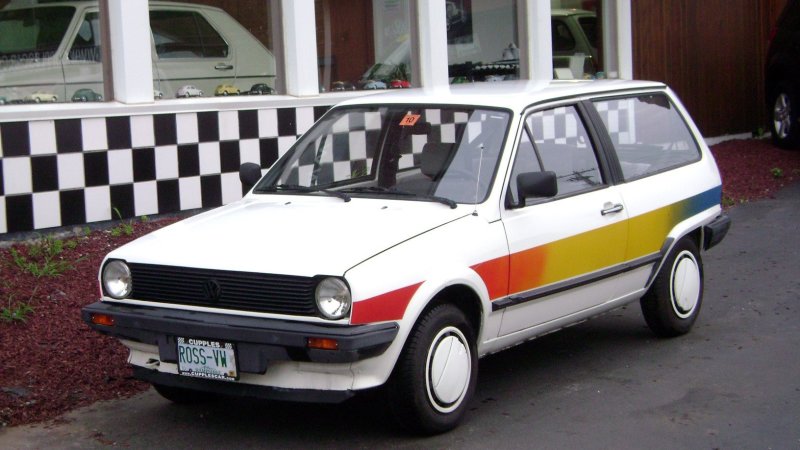Volkswagen’s quest for efficiency began long before legislators began linking emissions to fines. It sold several fuel economy Formel E-badged models in the 1980s and the research and development department took fuel economy to the next level by building a prototype called Öko-Polo, designed to produce just three liters of diesel per 100 kilometers. consume. represents approximately 78.4 mpg. A surviving prototype lives in New Hampshire.
Visually, the Öko-Polo differed little from the regular production variant of the second generation Polo on which it was based. It got rainbow-colored stripes on both sides and a roof-mounted spoiler borrowed from the Formel E, but nothing about these add-ons revealed the presence of a cutting-edge powertrain under the hood.
Power for the Öko-Polo came from a supercharged direct injection two-cylinder diesel engine with a displacement of 858 cubic centimeters. It delivered 40 horsepower, according to the enthusiastic Polo Driver website, and it gave the Öko-Polo a top speed of about 85 mph. Power was sent to the front wheels via a semi-automatic five-speed gearbox; Drivers still had to shift gears, but an electronic switch in the gear shift knob activated the clutch.
Even with 40 horsepower, a rounding off error in Hemi-speak, the Öko-Polo wasn’t as sub-par as it sounds, being very light. The engine was loud, however, so thick layers of sound deadening material kept the decibels in the cabin under control. In retrospect, everything came together beautifully and the prototype exceeded expectations. It averaged 138 miles per gallon on a trip from Marseille, France, to Wolfsburg, Germany.
One of the main goals of the project was to reduce emissions, so engineers developed an exhaust gas recirculation system, a particulate filter and a freewheel function, features common today but almost unheard of 32 years ago. They have also equipped the Öko-Polo with a version of the stop-start system found in the regular Polo Formel E.
Volkswagen tested about 60 copies of the Öko and sent the project to the attic after collecting the necessary data. Serial production was not seriously considered, in part because the hatchback would have cost too much to build, but some of the lessons learned later trickled down into the production cars. Volkswagen specifically released the Lupo 3L in 2000. It used three liters of diesel to travel 100 kilometers, like the Öko-Polo, thanks in part to visual adjustments (including a more aerodynamic grille), the widespread application of weight-saving techniques such as thinner glass and alloy suspension parts and a stop-start system for the 1.2-liter three-cylinder diesel engine.
New Hampshire-based enthusiast Ross Cupples keeps one of the surviving Öko-Polo prototypes in his personal collection of more than 70 Volkswagen models. On display in the gallery, it still wears its original rainbow-colored stripes and hasn’t lost its body-colored wheel covers. The odometer will display approximately 6,172 kilometers, which is equivalent to approximately 3,835 miles. However, the experimental engine has long since disappeared, so Cupples dropped a gasoline-burning 1.0-liter four-cylinder from a normal production model behind the grille to drive the car.
Finding a second-generation Polo in the United States is unusual, the model has never been officially sold here, but discovering a rare prototype is almost unheard of. How did it get here? Your guess is as good as ours; even Cupples don’t know. He bought it from a seller in Wisconsin who bought it at a government auction.
Related video:
